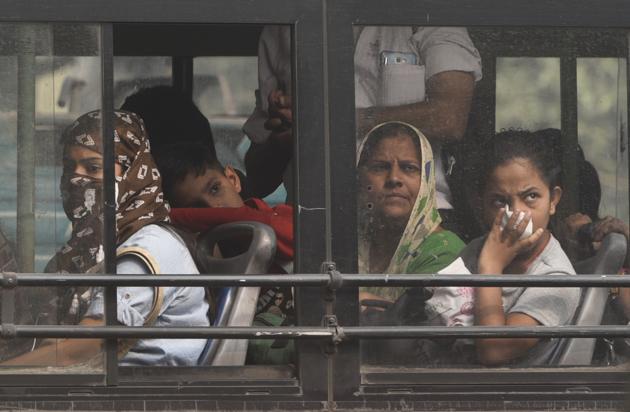To help Delhi breathe, pollution to be key focus in city’s Master Plan-2041
The solutions could include planning for more green areas, encouraging walking by making better pavements and transit networks, and making changes that could limit or re-route the entry of heavy vehicles – one of the most prominent sources of pollution.
Tackling air pollution is likely to be among the focus areas of the national capital’s next Master Plan, the blueprint for urban development that lays down guidelines on how and where Delhi builds its homes, offices, schools and industrial zones.

Officials involved in drawing up Master Plan of Delhi-2041 (MPD-2041) — this plan will come into force in 2021 when the current MPD expires — said they are looking at pollution and traffic data and comparing it with advanced geographical information to get the bigger picture on what factors could be affecting air quality.
“Currently, there is no data available on residential colonies or schools located around pollution hotspots. We will analyse pollution data along with Geographic Information System (GIS) data to locate these areas and accordingly plan for them,” said Jagan Shah, director of National Institute of Urban Affairs (NIUA), an institute tasked with helping draw up the master plan.
Such level of information was not available when MPD-2021 was drawn up.
Also read | How air pollution in Delhi is affecting our children
The Master Plan is a set of guidelines that underpin policies for housing, construction, transport and environment.
The solutions could include planning for more green areas, encouraging walking by making better pavements and transit networks, and making changes that could limit or re-route the entry of heavy vehicles – one of the most prominent sources of pollution.
“There is a need for integration of land-use, infrastructure, housing, transport and environmental factors to address issues like air pollution, congestion and other major concerns through planning,” said Shah.
The Master Plan will be implemented by Delhi Development Authority (DDA), which roped in NIUA, an autonomous research and advisory body under the Union housing and urban affairs ministry.
Kanak Tiwari, project coordinator of MPD-2041, said integration of data will help better identify problems and causes. “Not all problems can be addressed at the macro level planning. But once identified, it can be addressed in the micro-level planning of areas,” she said.
For instance, she said, integration of geographic data of schools and residential settlements with information from the Delhi Pollution Control Committee could potentially help create a plan that keeps children away from pollution hotspots. “Children are the worst affected by air pollution,” Tiwari added.
You may also like | Delhi’s air quality to deteriorate over two days due to adverse weather conditions
Similarly, economic activity data could give insights into truck and freight movements. Trucks are one of the main contributors to vehicular emissions. “The norms for logistics and transport planning can be tweaked in order to limit truck movement inside the city,” said Shah.
At present, officials are in the process of identifying indicators like physical infrastructure, services (sewer, water etc), economic activity, environmental factors (like air quality), transportation and congestion points. This work is likely to be completed by April, the official said.
While planning for the MPD is still in nascent stages, the experts involved said other measures could include redevelopment of old areas to ensure sustainable development.
“In the future, redevelopment of existing areas will be a major thing. The norms for redevelopment have to be such that there green spaces are spread out and there is more green space per capita, and also that parking space is reduced,” said Nilesh Rajadhyaksha, another project coordinator.
According to environmental experts, several amendments have been made to the current master plan, which was notified in 2007, to fight pollution but implementation has been a challenge.
“While concepts are ready, the main issue is in the implementation and compliance. There is a need to have a mechanism in place to ensure that MPD, which is a legally binding document, is implemented,” said Anumita Roy Chowdhury, executive director (research and advocacy) at Centre for Science and Environment.
Also read | Prosecute govt officials not acting on Delhi, NCR’s pollution complaints, says Supreme Court



